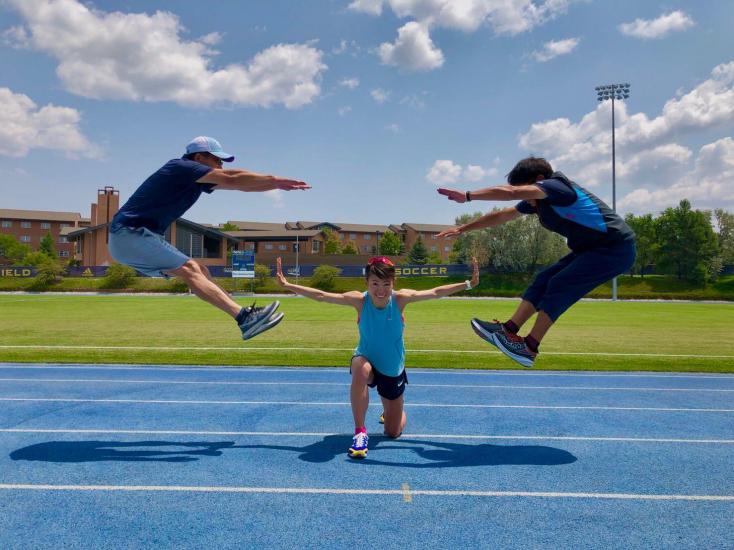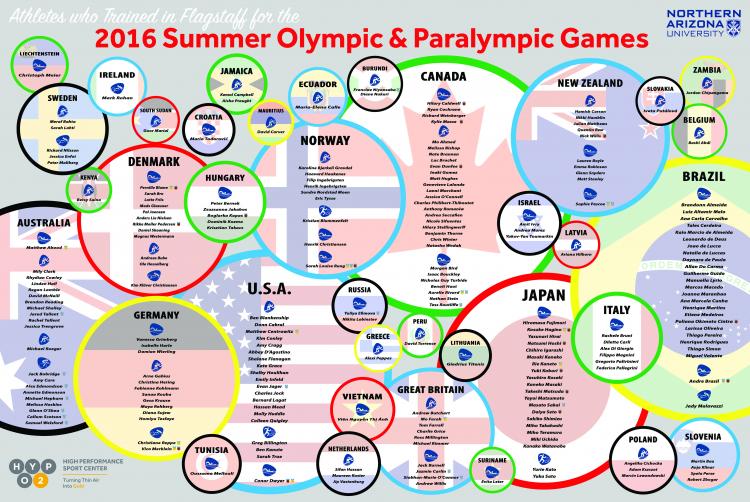Center of the Altitude Training Universe
If you’re an active person who happens to be visiting or living in Flagstaff right now, and you also happen to hit the trails, tracks, roadways and pools on occasion, you just might have noted that there are a LOT of very fast, very accomplished elite international athletes who train in Northern Arizona.

In fact, there is likely no high-altitude city anywhere on the planet at any given point in time who hosts more high-level runners, swimmers, and other types of elite endurance athletes from more countries than Flagstaff, Arizona. These sorts of athletes regularly grace our fair city for altitude training but in the short-term lead-up to a summer Olympic games, it means even more volume than usual.
The months leading into Tokyo 2020 will mean hundreds upon hundreds of some of the very best athletes in the world (from countries including Great Britain, Japan, Italy, Canada, Australia, Germany, Norway, New Zealand, Netherlands, and many more) flocking to Flagstaff for serious training in preparation for their national selection competitions, and a highly-coveted punched ticket to the 2020 Games. Given that these athletes include Olympic medalists, world record holders, and national champions, and with seemingly so many great places at which these athletes can choose to train, it begs the question, “Why Flagstaff?”
What makes Flagstaff the ideal training destination?
In a nutshell, successful training camps are often about the milieu rather than any one thing. This means a combination of elements, rather than any one particular element. In Flagstaff, you have an incredibly unique combination of training camp components that make it, in terms of an altitude training site, second to none anywhere in the world:
- Physiologically ideal altitude of 7,000 feet where the desired physiological adaptations from altitude training (increases in erythropoietin production, red blood cell mass, total blood volume to move oxygen more efficiently through the bloodstream, etc.) can occur.
- Very high-quality training venues (sprinkled around the city and centered around Northern Arizona University).
- World-class performance-related services (courtesy of HYPO2 and its experienced high-performance management team).
- World-class extracurricular activities and diversions (such as the Grand Canyon) that attract millions from all over the world.
- All the advantages that come with being based in an actual city at altitude (such as restaurants, museums, observatories, Route 66 attractions, etc.), rather than training in other, typically remote altitude training sites.
- Extremely strong sport culture, in which athletes achieve easy integration into a city that is used to seeing and supporting elite athletes in training.
How many Olympic athletes have trained in Flagstaff?
What can athletes hope for by taking advantage of this milieu that Flagstaff offers? Well, if the last Olympics in Rio de Janeiro is any indication, a serious haul of hardware would not be out of the realm of reasonable expectations. Of all the many athletes who trained in Flagstaff for the 2016 Olympics, 218 of them from 30 countries made their nation’s Olympic team (a feat in itself) and took back with them 39 combined Olympic and Paralympic medals.
When you weigh all these things together, it’s no wonder Flagstaff is the center of the altitude training universe, and no wonder why it will continue to be an endurance sport mecca for many sports for many seasons to come. We who are fortunate enough to live, work and train here know firsthand how special Flagstaff is. Looks like the rest of the world continues to catch on, hoping to do as others have and turn our thin air into gold!

About the Author

Sean Anthony
Sean graduated from the University of Wisconsin-Madison School of Business and moved to Flagstaff in 1995. As Associate Director at Northern Arizona University’s Center for High Altitude Training from 1996-2008, Sean cultivated a wealth of experience working with the best elite sport programs in the world. He oversaw both the university’s international altitude training camp program and was Director for NAU’s U.S. Olympic Training Site designation from 2005 until his resignation from NAU in 2008.